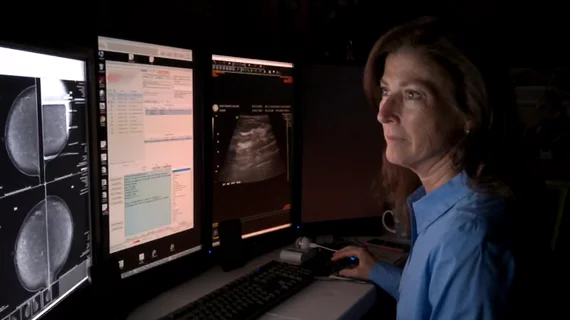Stand-alone AI for lung cancer screenings could reduce radiologist workloads by 86%, study suggests
Using artificial intelligence to read baseline lung cancer screenings could result in a significant workload reduction for radiologists, new research suggests.
The study, published in Lung Cancer, acknowledges that the standard for lung cancer screening is shifting toward ultra low-dose CT (LDCT) scans. Inevitably, these quick and accessible screenings will increase radiologists’ workloads.
“The capacity of clinical radiologists is already under extreme pressure due to an ever-increasing demand for radiology services and workforce shortages. Thus, radiologists’ challenging workloads associated with LDCT lung cancer screening is a noteworthy hurdle which needs to be addressed and overcome in the planning of lung cancer screening implementation,” corresponding author Matthijs Oudkerk, with the Faculty of Medical Sciences at the University of Groningen, and co-authors explained.
Though studies have highlighted the benefits of AI as a second or confirmatory reader, the experts noted that false positive and false negative results remain an issue with these interpretations.
The researchers wanted to evaluate how using AI as a stand-alone reader for ultra-LDCT baseline lung cancer screenings compared to the skills of an experienced radiologist.
For the study, they used the ultra-LDCT screenings of 283 patients, each of whom had at least one solid lung nodule. The volumetric measurements of five blinded radiologists were compared to the measurements of an AI lung cancer screening prototype. Discrepancies were noted and categorized as positive misclassifications (PM) and negative misclassifications (NM).
Out of the 1,149 nodules assessed, 878 were solid. As a stand-alone reader, AI detected 61 discrepancies in the largest nodules, while the five rads identified only 43, 36, 29, 28 and 50, respectively. For NMs, AI outperformed 4 of the 5 radiologists, with only 2.8% of reads resulting in NMs compared to 7.4%, 3.9%,1.4%, 7.8% and 12.4% for the rads.
With these numbers, the experts calculated that using AI as a stand-alone reader could result in a workload reduction of 86.7%.
“AI could be used as a first reader in lung cancer screening, which will be a major step in the standardization and implementation of lung cancer screening worldwide,” the experts noted.

